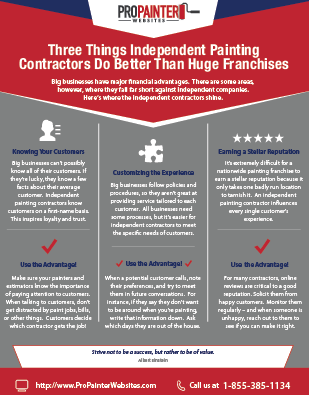Figure Out Just How Seasonal Variables Influence Industrial Exterior Paint Success And Uncover The Very Best Times To Make Certain Enduring Outcomes For Your Job
Figure Out Just How Seasonal Variables Influence Industrial Exterior Paint Success And Uncover The Very Best Times To Make Certain Enduring Outcomes For Your Job
Blog Article
Write-Up Developed By-Ford Rodriquez
When you're planning a commercial exterior painting task, seasonal aspects can make or damage your outcomes. You'll intend to think about how temperature and moisture effect paint application and drying out times. Selecting the ideal season can guarantee your paint sticks effectively and lasts longer. Yet which seasons are absolutely the most effective for this kind of job? Let's discover the crucial elements that can influence your task's success.
The Influence of Temperature Level on Paint Application
When you're intending a business external paint project, the temperature can significantly impact exactly how well the paint sticks and dries.
Preferably, you wish to paint when temperature levels vary between 50 ° F and 85 ° F. If it's as well cool, the paint might not treat properly, resulting in problems like peeling or splitting.
On the flip side, if it's too hot, the paint can dry as well rapidly, protecting against correct adhesion and causing an irregular finish.
You need to also consider the moment of day; early morning or late afternoon offers cooler temperatures, which can be a lot more positive.
Constantly check the manufacturer's recommendations for the particular paint you're using, as they frequently offer assistance on the excellent temperature level range for optimal results.
Moisture and Its Result on Drying Times
Temperature isn't the only environmental element that influences your industrial exterior painting task; moisture plays a considerable role also. High moisture degrees can decrease drying out times substantially, influencing the general high quality of your paint job.
When the air is saturated with wetness, the paint takes longer to heal, which can bring about concerns like bad attachment and a greater risk of mold growth. If you're painting on an especially moist day, be prepared for extensive delay times between layers.
It's critical to keep track of neighborhood climate condition and plan as necessary. Preferably, aim for humidity levels in between 40% and 70% for ideal drying out.
Maintaining these factors in mind ensures your task remains on track and provides a long lasting finish.
Best Seasons for Commercial Outside Painting Projects
What's the very best season for your commercial exterior painting tasks?
Springtime and very early fall are generally your best bets. Throughout these seasons, temperatures are moderate, and moisture degrees are usually reduced, creating perfect problems for paint application and drying.
Stay clear of summer season's intense heat, which can create paint to completely dry as well rapidly, bring about inadequate attachment and finish. Similarly, winter's cool temperatures can hinder proper drying and treating, taking the chance of the durability of your paint job.
Go for carboline paint with temperatures in between 50 ° F and 85 ° F for optimal outcomes. Bear in mind to inspect the local weather prediction for rainfall, as wet problems can destroy your task.
Planning around top rated house painters near me guarantees your painting project runs smoothly and lasts longer.
Conclusion
Finally, planning your business outside paint projects around seasonal factors to consider can make a substantial distinction in the outcome. By organizing job during the suitable temperature levels and humidity levels, you'll guarantee far better bond and drying times. Bear in mind to keep an eye on regional weather report and select the right time of year-- springtime and very early loss are your best choices. Taking these actions will assist you achieve a resilient and expert surface that lasts.
